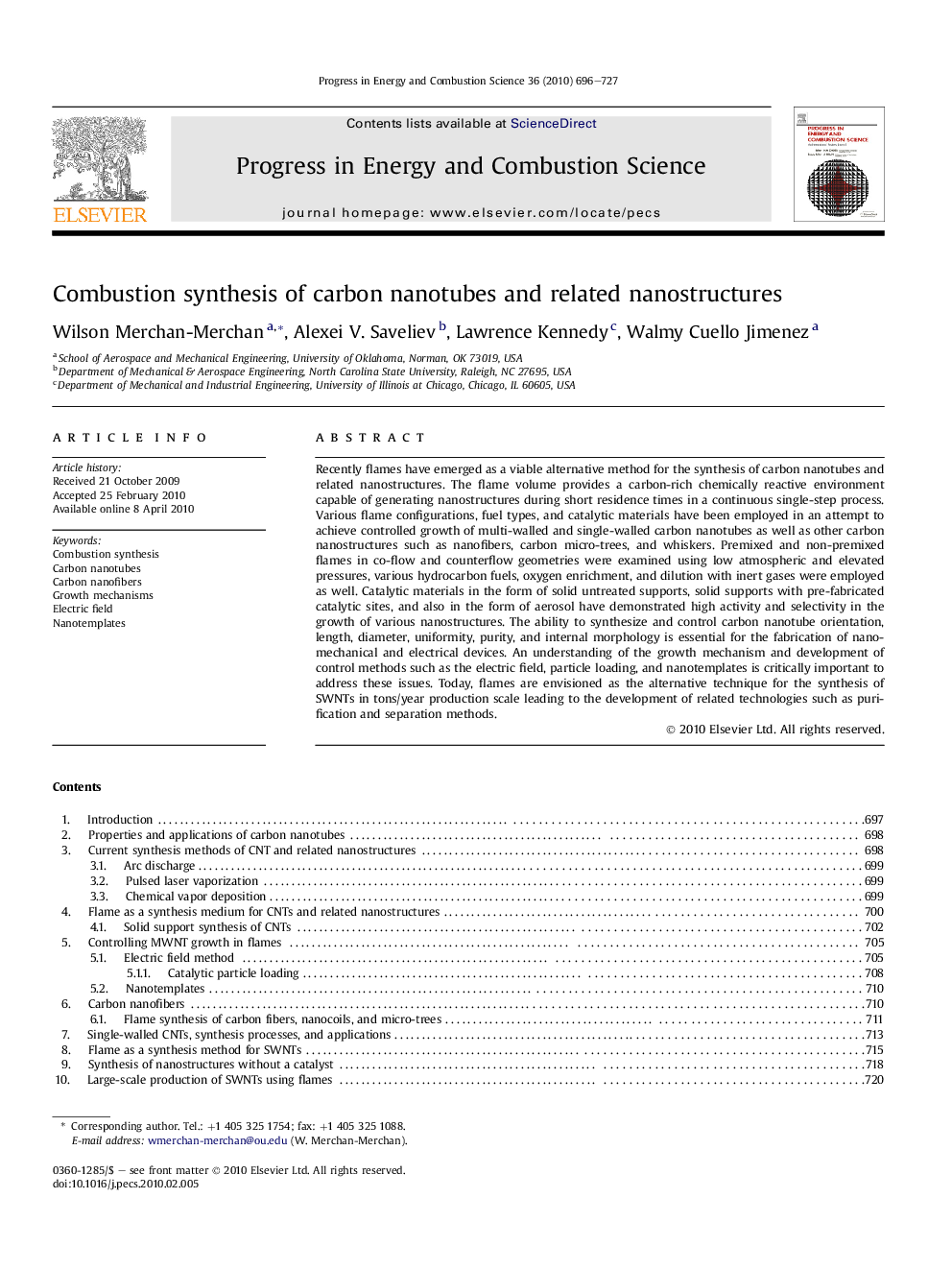| Article ID | Journal | Published Year | Pages | File Type |
|---|---|---|---|---|
| 241825 | Progress in Energy and Combustion Science | 2010 | 32 Pages |
Recently flames have emerged as a viable alternative method for the synthesis of carbon nanotubes and related nanostructures. The flame volume provides a carbon-rich chemically reactive environment capable of generating nanostructures during short residence times in a continuous single-step process. Various flame configurations, fuel types, and catalytic materials have been employed in an attempt to achieve controlled growth of multi-walled and single-walled carbon nanotubes as well as other carbon nanostructures such as nanofibers, carbon micro-trees, and whiskers. Premixed and non-premixed flames in co-flow and counterflow geometries were examined using low atmospheric and elevated pressures, various hydrocarbon fuels, oxygen enrichment, and dilution with inert gases were employed as well. Catalytic materials in the form of solid untreated supports, solid supports with pre-fabricated catalytic sites, and also in the form of aerosol have demonstrated high activity and selectivity in the growth of various nanostructures. The ability to synthesize and control carbon nanotube orientation, length, diameter, uniformity, purity, and internal morphology is essential for the fabrication of nanomechanical and electrical devices. An understanding of the growth mechanism and development of control methods such as the electric field, particle loading, and nanotemplates is critically important to address these issues. Today, flames are envisioned as the alternative technique for the synthesis of SWNTs in tons/year production scale leading to the development of related technologies such as purification and separation methods.
